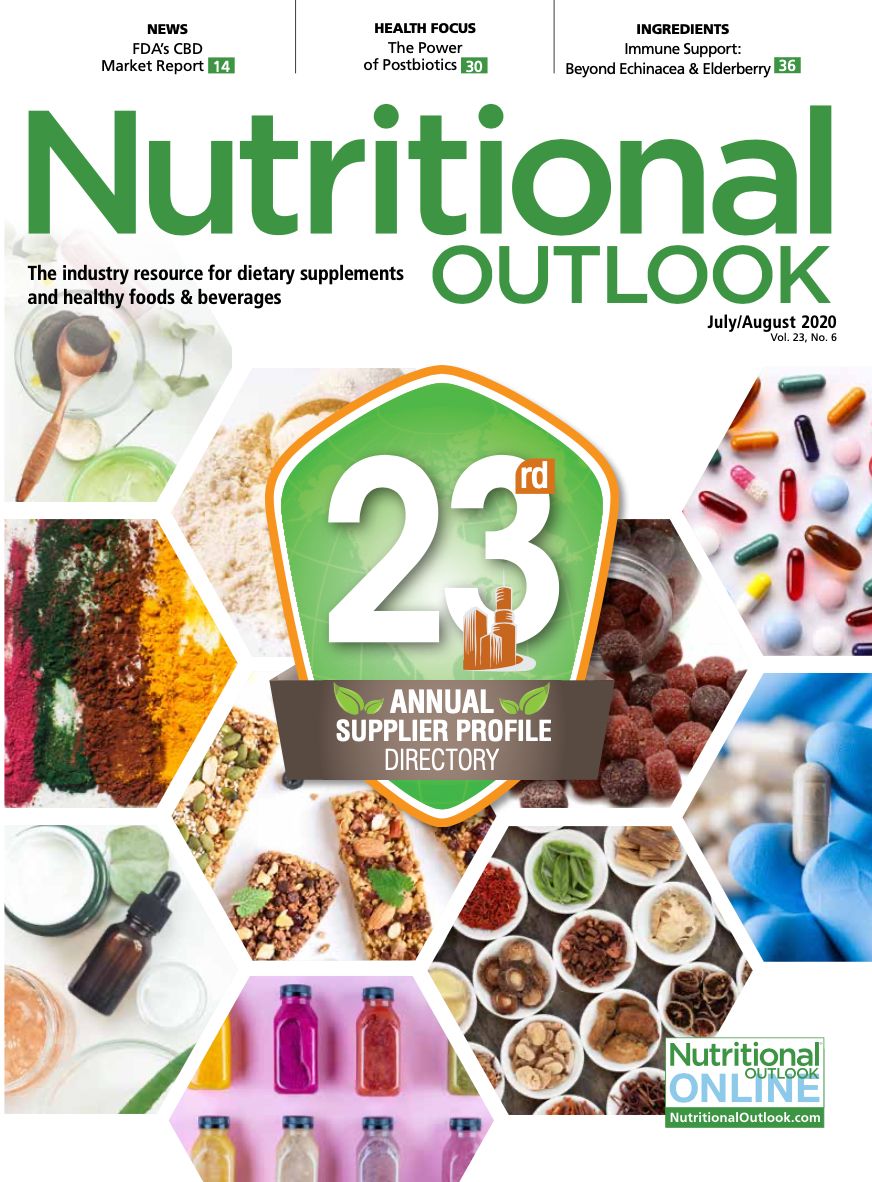Insight marketing, not content marketing, works best in today’s digital environment
Dietary supplement companies should leverage the power of insight marketing over generic content marketing to better reach today’s digitally overwhelmed audience, one marketing expert writes.
Who is your customer, and what does she want? Hint: Not another generic message. Photo © Shutterstock.com/oOhyperblaster

Trade shows and events continue to cancel at an alarming rate in the face of the COVID-19 pandemic, and we really won’t know what the face-to-face marketing landscape in the dietary supplement industry will ultimately look like for quite some time. If your marketing program relies heavily on live events to drive brand awareness and lead generation, you might be asking yourself, “Now what?”
The world’s turn to online resources in this time of social distancing has certainly been a “gold rush” opportunity for industry companies already equipped with strong digital platforms for advertising and virtual events. But not everyone is ready. Many panicked marketing managers are rushing to the party to quickly increase their digital presence. But, as American sports broadcaster Lee Corso would say, “Not so fast, my friend!” To maximize digital marketing performance, you must understand the difference between two very important concepts: 1) insight marketing and 2) content marketing. And, while many view insight marketing as a segment of content marketing, I do not.
Content Marketing: The “Dinosaur”
What is content marketing? At its core, content marketing is the creation and sharing of information designed to attract buyers in a clearly defined audience. And at one time, that is exactly what it was. But the explosion of digital channelsand the pressure for marketers to consistently occupy space has led to an unintended and unfortunate consequence: the once unique and perspicacious content creation has quickly been eroded by perpetually repackaged information and statistics, offering information that is far too general and much less valuable for buyers. Simply put, the endless channels in digital have created too much “open space” to fill, and much of the content being pushed through is stale and disinteresting.
Buyers are faced more than ever with the chore of sifting through mountains of published content to uncover something of value, and I feel this practice is at a breaking point. So, if I’m playing the word association game with content marketing, the word I use to describe it is dinosaur. Much like the dinosaurs, I believe content marketing is marching towards the same fate: extinction.
Publishing content on every imaginable digital platform can make marketers feel better about themselves and give a false sense they are delivering valuable information to the masses, but in reality competitors are sharing much of the same low-quality content—and it’s not connecting with buyers. The reason: buyers are reading the same information over and over again, just written in a different way.
So, while our industry continues to evolve through advanced research and insights, the messaging and content we are delivering to our buyers has not kept up. In the same way an author writes a compelling book, or an artist creates a distinctive piece of art, a marketing professional needs to utilize his or her own style and voice to tell a unique story.
When reading a well-written book, you are typically hanging on the author’s every word, excited to turn to the next page. The author has created interesting and unique content and used his or her “voice” to tell a compelling story. It is doubtful you would have the same level of interest if you read the same story over and over again, with just a few sentences changed. As marketers, we tend to be guilty of editing an existing story, rather than writing our own.
A Better Way: Insight Marketing
Given these challenges, how should a marketer cut through the noise and deliver a truly effective marketing campaign? What actions need to be taken to truly maximize a company’s digital opportunities?
The first step is to understand the principle of insight marketing. Whereas content marketing has become broad and reliant on general knowledge to drive messaging, insight marketing is a more sophisticated approach rooted in understanding buyer’s sentiment and behavior, and presenting data driven messaging to solve unique problems.
The process of insight marketing begins with research and data collection; it is critical for marketers to truly understand what keeps their buyers up at night. And, spoiler alert: this is constantly changing. This collection of information can be done in many ways—researching industry association data, reviewing social media and user forums (including those of your competitors), and utilizing survey information, including facilitating your own custom surveys.
Marketing content, no matter how expertly crafted, must align with your buyers’ most current and important pain points and present a solution to their problem. The success of an insight marketing initiative relies heavily on how well the author is aligned with the audience, and on their ability to create content that is relevant and valuable. It’s not publishing content for the sake of filling space; think quality over quantity. The authenticity of the information is rooted in the fact it has been uniquely written, with the voice of an expert. You as the author are not editing and repackaging an existing story; you are crafting your own unique position paper that creates a “fork in the road” for your audience and “asks” them to follow you to help them solve a problem. It’s important to point out that if you as the author are not taking a bold stance on a subject, then you are most likely not providing guidance or insight. So, as content marketing is perceived as a sequel or rerun, insight marketing can be viewed as a uniquely written blockbuster.
But how to do it? How does a marketer gain the competitive advantage of creating insightful content? The first step is generally a change of mindset. If you’ve ever heard the phrase, “You must slow down to speed up,” then you are on the right track. To position yourself as an expert who is aligned with your buyers, you must do your homework. Marketers skilled in the use of insights to drive content understand the basic principles of aligning with the unique interests and challenges of their buyers. Here are three quick tips:
Be proactive: With an increasingly cluttered digital space serving as the backdrop for our storytelling, it is our job as marketers to understand our buyers and make them the star of the show. The most successful content authors realize this and constantly explore ways to better understand their buyers. Don’t confuse industry information and statistics with buyer profile data. Being proactive means using data-mining techniques to understand your buyers and uncovering what’s top of mind to them at all times. Data is the new oil.
Be bold: You’re not going to change the face of marketing if you are reluctant to adapt to the evolving landscape in digital. There was a time when if you posted it, they would come. Today’s successful marketers do their research and craft unique content that addresses those topics most top of mind to their buyers. Being bold means positioning yourself as a subject expert and being willing to draw a line in the sand and lead your buyers to a business decision. It is a new way of thinking, and marketers need to have the confidence to become content authors instead of a content editors.
Be smart: If you take a moment to step off the hamster wheel, you can uncover a whole new level of performance. The sheer volume of digital channels requires marketers to spend more and more time “filling space.” But, have you ever slowed down long enough to actually assess which platforms offer your organization the greatest visibility and results? Being smart means understanding which spaces represent the greatest opportunities and then taking the time to own them. It is simply not possible to bring your “A” game to every digital platform. Understanding where you should be, and bypassing the others, is the final piece of the puzzle.
Standing Out in Sea of Marketing
Insight marketing relies on us as authors to do our homework and truly understand our buyers. It requires listening, learning, and developing unique and valuable content that connects us with our audience, virtually. It separates those who simply want to add a coat of paint to an existing structure that is in need of repair, from those who are willing to put in the work to build their own custom super-structure. Only by taking the time to truly understand what is most important to our buyers can we stake our claim as an industry expert.
If you want to maximize your digital marketing spend and break through the clutter, take the time to become an expert at crafting unique stories that will make your readers want to turn to the next page—and, ultimately, make you their favorite author.
Greg Lindsey is the vice president of corporate marketing for Wiley Companies (Coshocton, OH), a global leader in custom chemicals and food ingredients He is an expert in marketing communications strategy and has worked with some of the world’s most recognizable brands. Greg can be reached at greg.lindsey@wileyco.com.

Prinova acquires Aplinova to further increase its footprint in Latin America
April 7th 2025Prinova has recently announced the acquisition of Brazilian ingredients distributor Aplinova, which is a provider of specialty ingredients for a range of market segments that include food, beverage, supplements, and personal care.























